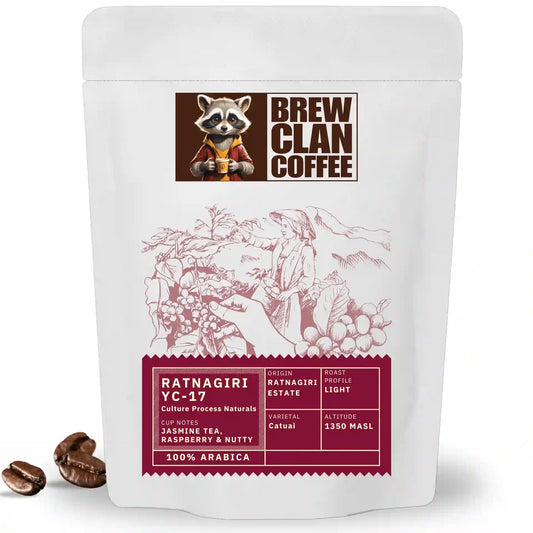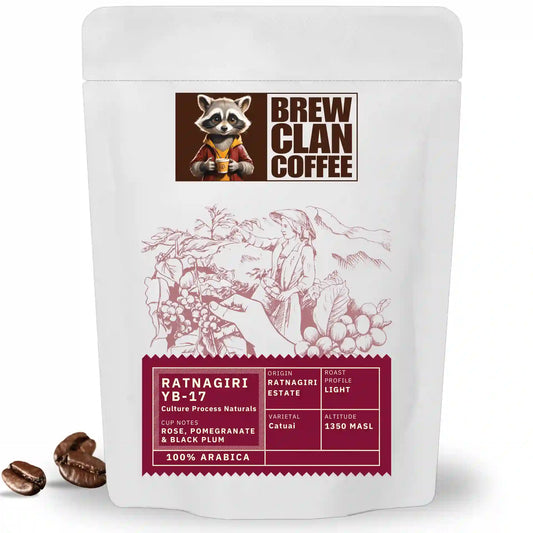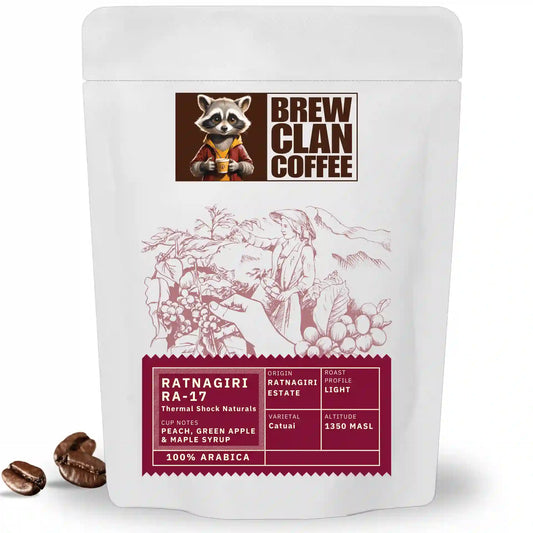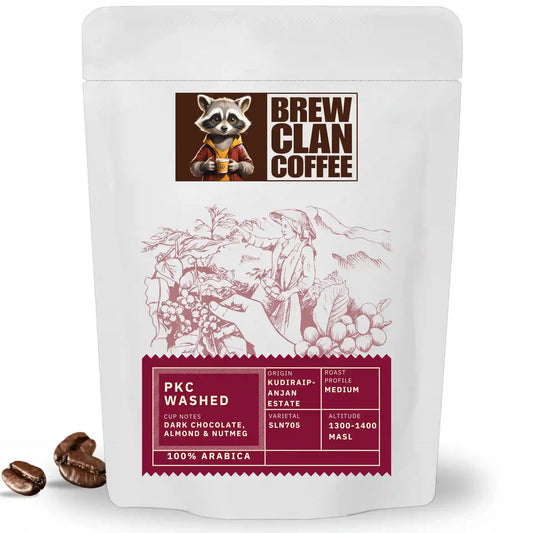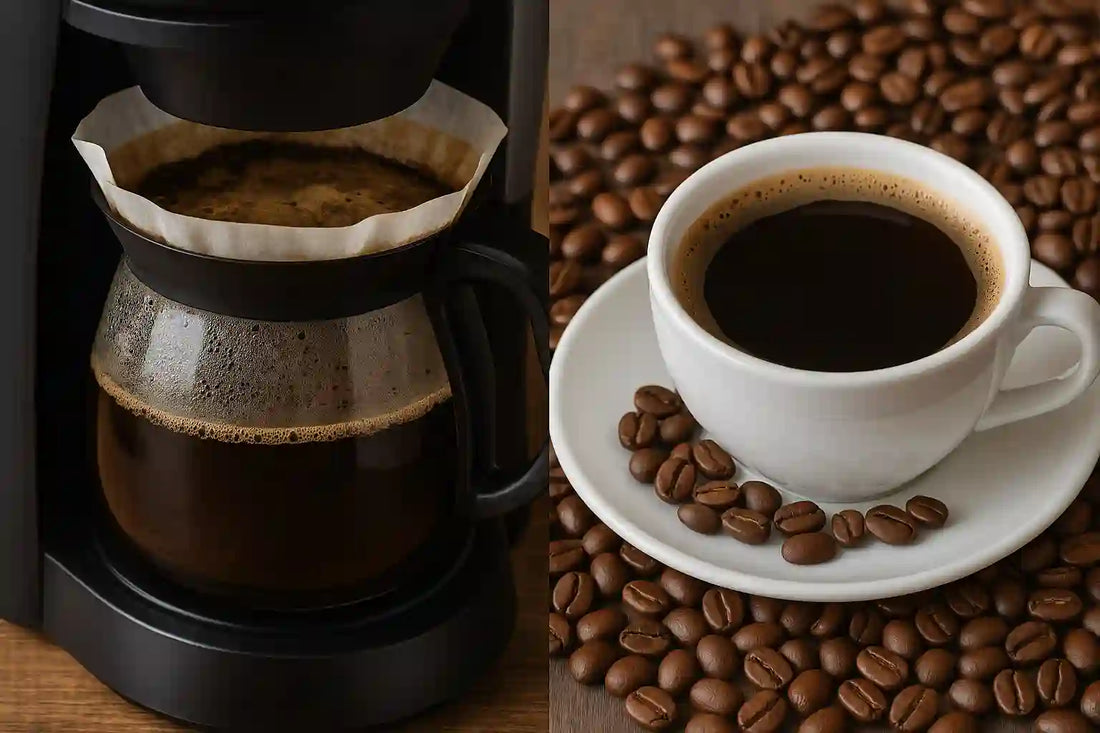
What is the Difference Between Drip Coffee and Regular Coffee?
Share
Clearing the Coffee Confusion
If you’ve ever stood in a café staring at the menu, wondering whether drip coffee is just a fancy way of saying regular coffee, you’re not alone.
The terms sound interchangeable - after all, both promise a simple black cup to kickstart your morning, but they’re not quite the same thing.
Here’s the tricky part: “regular coffee” isn’t a universal recipe. In the U.S., it might mean a bottomless diner brew. In India, it could be instant coffee whisked with milk and sugar.

In Europe, it might even point to a café’s default espresso-based drink. The word regular is less about brewing science and more about what’s most familiar in a particular culture or household.
That’s where drip coffee stands apart. It isn’t just “whatever you usually drink”, it’s a specific brewing method with its own process, flavor profile, and equipment.
By the end of this guide, you’ll know exactly how drip coffee differs from the catch-all “regular coffee,” and more importantly, how to choose the style that matches your taste buds and morning mood.
Key Takeaways
Drip = Method, Regular = Habit: Drip coffee refers to a specific brewing process, while “regular coffee” means whatever is familiar in a culture or household.
Clean & Nuanced: Drip coffee uses paper filters to capture oils and fine particles, resulting in a brighter, smoother cup.
Strength Is Flexible: Both drip and regular coffee can be strong or mild depending on grind size, brew time, and ratios.
Health Edge: Paper-filtered drip coffee contains less cafestol, potentially lowering cholesterol compared to unfiltered methods.
Your Taste Rules: There’s no winner. If you love bold, comforting brews, “regular” is perfect. If you enjoy delicate flavor notes, drip will delight you.
What People Mean by “Regular Coffee”
Here’s where things start to get fuzzy. “Regular coffee” isn’t a recipe, it’s a habit.
It simply means the coffee most people around you drink every day, which can vary wildly depending on where you are.
- United States: In most diners and households, “regular coffee” usually points to a basic black drip brew, the kind made in a Mr. Coffee machine or served bottomless at a roadside café. Order a “regular” in New York, and you might even get cream and sugar by default.
- India: Ask for a “regular coffee” and you’ll probably be handed a cup of instant coffee mixed with hot milk and sugar. In South India, it might mean the beloved filter kaapi, brewed in a steel filter and frothed with milk.
- Europe: In many cafés, “regular” might translate to an Americano-style espresso, a shot of espresso topped with hot water to mimic a larger black coffee.
The key takeaway? Regular isn’t a brewing method at all. It’s about what feels familiar in a particular culture or household, whether that’s a diner pot, a Nescafé sachet, or a foamy South Indian filter brew.
Drip coffee, on the other hand, is a specific way of making coffee, and that’s where the distinction begins.
What is Drip Coffee, Technically?
Unlike the vague idea of “regular coffee,” drip coffee is a clearly defined brewing method. It’s all about gravity and steady water flow.

Definition
Drip coffee is brewed when hot water slowly drips through a bed of ground coffee, held in a paper or metal filter. The brewed coffee collects in a carafe or cup below, leaving most of the oils and fine particles behind.
Equipment
This method can be done in two main ways:
- Automatic drip machines (like a home coffee maker) that heat water and handle the dripping process for you.
- Manual pour-over gear such as a V60, Chemex, or Kalita Wave, where you pour hot water yourself in a controlled spiral or steady stream.
Brewing Basics
Drip brewing typically uses a medium grind, with water heated to around 90–96°C (195–205°F). Gravity pulls the water through the coffee bed, allowing an even extraction of flavors.
Flavor Profile
Because paper filters trap much of the coffee’s oils and sediment, drip coffee tastes clean, smooth, and nuanced.
Each sip highlights the unique flavor notes of the beans, think fruity Ethiopian or nutty Colombian, without the heaviness of unfiltered brews.
In short, drip coffee isn’t just “regular” coffee with a fancier name; it’s a specific technique that creates a distinctively bright and balanced cup.
For more details on drip coffee, please visit: Drip Coffee Guide
Key Differences Between Drip Coffee and “Regular Coffee”
|
Feature |
Drip Coffee |
Regular Coffee (general) |
|---|---|---|
|
Brewing method |
Hot water drips over grounds via filter |
Could be instant, French press, moka pot, etc. |
|
Flavor & Body |
Clean, bright, smooth |
Varies widely; instant can be flat, French press is heavier |
|
Equipment |
Drip machine / pour-over gear |
Any method |
|
Time & Effort |
3–6 min for pour-over, automated machines are hands-off |
Ranges from 30 sec (instant) to 10 min (French press) |
|
Caffeine |
Moderate, depends on ratio |
Varies by method and grind |
|
Filter effect |
Paper removes oils (lower cholesterol) |
Pressed or boiled coffee retains oils |
Flavor & Experience: Why Drip Stands Out
If espresso is like a rock concert, loud, punchy, and unapologetically intense, then drip coffee is a jazz session. It’s slower, more layered, and rewards those who take a moment to savor.

Here’s why drip brewing captures so many hearts (and taste buds):
☁️ Clean Cup, Clear Flavors
The humble paper filter is the unsung hero of drip coffee. By trapping fine particles and much of the coffee’s natural oils, it produces a bright, crisp cup that lets delicate notes shine.
Fruity Ethiopian beans? Floral Gesha? A good drip brings out those high notes without the heavy mouthfeel of espresso or French press.
🔁 Consistency You Can Count On
With automatic drip machines, you can wake up half-asleep, hit a button, and still enjoy a cup that tastes almost exactly the same every morning.
The machine takes care of temperature control and even water distribution, so every brew is reliable and balanced.
🎨 Complexity for the Curious
Prefer to play barista? Manual pour-over methods (like V60, Kalita, or Chemex) let you fine-tune every variable - bloom time, pour speed, grind size, water temperature giving you a deeper connection with your coffee.
Each tweak reveals a different facet of the bean’s character.
🌸 When to Choose Drip
Pick drip when you’re in the mood for subtlety over strength. If you love fruity, tea-like profiles or want to appreciate the terroir of a single-origin coffee, drip is your best friend.
It’s the brewing method for people who’d rather explore layers of aroma than chase a caffeine jolt.
Health & Nutrition Considerations
Coffee isn’t just about flavor and ritual, it’s also something we put into our bodies every day.
Here’s how drip coffee stacks up when you look at it from a health and nutrition angle:
🫀Cholesterol-Friendly
Drip coffee uses a paper filter, which traps most of the natural oils (called cafestol and kahweol) present in coffee.
These compounds have been linked to higher LDL (bad) cholesterol levels when consumed in excess, especially in unfiltered brews like French press or Turkish coffee.
➡️ Translation: A daily drip brew is generally kinder to your heart health than unfiltered methods.
⚡ Caffeine Check
Caffeine content can vary based on grind size, brew time, and bean type, but here’s the general pecking order per serving:
- Espresso (single shot, 30 ml): ~60–75 mg caffeine
- Drip coffee (240 ml mug): ~90–120 mg caffeine
- Instant coffee (240 ml mug): ~60–80 mg caffeine
So while a single espresso feels stronger, one cup of drip often delivers more total caffeine, it’s just spread out in a larger volume, giving a smoother energy lift rather than a sharp spike.
🍬 The Additives Trap
When you order a “regular coffee” at a café, it often comes with milk and sugar by default, which can quietly add 50–150+ calories per cup.
Black drip coffee, on the other hand, is virtually calorie-free, giving you full control over what goes in your mug.
Choosing the Right Coffee for Your Taste
Now that you know the what and why, let’s get to the fun part—finding the beans and brew that match your taste buds.
🌱 Beans & Roast Level
- For Drip Lovers: Light-to-medium roasts are your best friends. They highlight delicate notes, think citrus, berries, florals, or caramel that shine through in a clean drip brew.
- For “Regular” Comfort Seekers: Medium-dark or dark roasts bring that familiar toasty, chocolatey, slightly bitter flavor you might associate with diner coffee or South Indian filter coffee.
⚖️ Grind Size Matters
For drip brewing, you need a medium grind, roughly the texture of beach sand. Too fine, and you’ll over-extract (bitter!). Too coarse, and you’ll under-extract (weak and sour).
☕ Practical Starter Tip
If you’re moving from instant coffee or a moka pot, begin with a medium roast single-origin (like a washed Arabica from India or Ethiopia) and a simple pour-over setup (Hario V60 or a basic drip machine).
This gives you a balanced cup with enough body to feel familiar, but with new layers of flavor waiting to surprise you.
Common Misconceptions
Despite its long-standing presence in cafés and kitchens, drip coffee still suffers from a few persistent myths.

Let’s clear them up:
☕ Myth 1: Drip Coffee Is Just “Fancy Instant”
Truth: Instant coffee is made from pre-brewed, dehydrated coffee crystals that dissolve in water. Drip coffee, on the other hand, is freshly brewed from ground beans every time. The water extracts flavors on the spot, which is why drip tastes livelier and more aromatic.
💪 Myth 2: Drip Coffee Is Always Weaker
Truth: Strength is about brew ratio and grind size, not the brewing method itself. A well-dialed drip recipe can produce a cup that’s just as bold as a French press or moka pot, without the heavy texture.
🌍 Myth 3: “Regular Coffee” Is Lower Quality
Truth: “Regular” isn’t a measure of bean grade or freshness. It simply reflects habit or culture. A regular cup can be made with high-grade specialty beans or commodity coffee, it’s all about what’s in the cup, not the label.
Conclusion: Finding Your Perfect Cup
At the end of the day, the real difference between drip coffee and “regular coffee” isn’t about prestige. It’s about process and expectation.
Drip coffee is a method that delivers a clean, nuanced brew, while “regular coffee” is a mindset rooted in familiarity.
Whether you crave the comforting taste of a diner-style cup or the precision of a pour-over, what matters most is that you enjoy what’s in your mug. The best coffee is the one that fits your taste, lifestyle, and mood.
FAQs: Drip Coffee vs. Regular Coffee
Q1: Is drip coffee stronger than regular coffee?
Not necessarily. Strength depends on the coffee-to-water ratio and grind size. Drip can be mild or bold depending on how it’s brewed.
Q2: Is drip coffee the same as filter coffee?
Almost. Drip coffee is a type of filter coffee. The term “filter coffee,” however, can also refer to South Indian filter brews or European café styles, which may have different techniques.
Q3: Does drip coffee need special beans?
No, but light-to-medium roasts with complex flavor notes shine best because the paper filter highlights clarity.
Q4: Is drip coffee healthier than instant coffee?
Drip coffee filtered through paper contains less cafestol (a compound linked to cholesterol) than unfiltered brews like French press, making it slightly better for heart health.
Q5: Can I make drip coffee without a machine?
Yes. Manual pour-over methods like V60, Chemex, or Kalita Wave use the same principles, gravity and filtration, without electricity.

